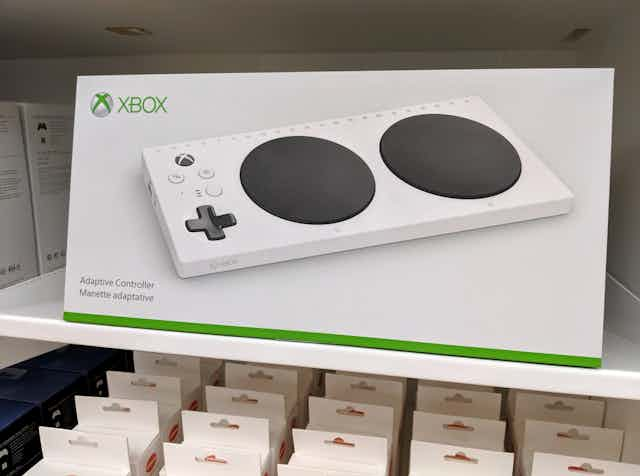When it comes to accessibility in gaming, Microsoft takes two steps forward with the Xbox Adaptive Controller, but a giant leap back with its ban on third-party devices.
On Oct. 31, some Xbox players began receiving a new error code on their Xbox One and Xbox Series X/S consoles. The error code meant that players were using an unauthorized third-party controller — one not made by Microsoft or an official hardware partner. Players were given two weeks’ notice until the unauthorized controller would no longer work with their consoles.
Essentially, Microsoft had quietly banned the use of controllers not made or approved by the company. In the following weeks, Microsoft officially stated the ban was meant to protect players’ gaming experiences, and ensure the quality and safety of players’ controllers.
The ban, however, presents barriers to many disabled gamers who may use third-party controllers for accessibility reasons.
Social exclusion and accessibility
When we talk about accessibility and the social exclusion of disabled people, we often do not consider accessible forms of leisure to be important.
Legal policies such as the Americans with Disabilities Act and the Accessibility for Ontarians with Disabilities Act that legislate access to public spaces and provide protection from employment discrimination are often viewed as more important.
But video games are a massive source of entertainment for both children and adults. The gaming industry is currently the highest-grossing entertainment industry worldwide. With an estimated 6.2 million disabled people in Canada, 61 million disabled people in the United States and 1.3 billion disabled people worldwide, there is undoubtedly a large group of disabled video game players.
In order to have a truly inclusive and accessible society, disabled people’s rights to meaningfully take part in accessible forms of entertainment, leisure and play must be supported.

Video game accessibility
In recent years, Microsoft has been a leader in video game accessibility. In 2018, they were the first major gaming company to release an adaptive controller.
The Xbox Adaptive Controller is a customizable controller that allows players to connect external devices (foot pedals, joysticks, buttons, switches) to ports on the back of the controller. This controller design allows players to construct their own unique gaming setup. Someone previously unable to hold a controller would now be able to play a game mainly with their feet, for example.
Because controllers require a high amount of dexterity to use, many disabled people (particularly those with mobility impairments) are not able to play video games. Assistive technologies like the Xbox Adaptive Controller help make video games more accessible.
Disabled players have made their own accessibility solutions for years. The Xbox Adaptive Controller was a massive step forward for video game accessibility because it showed official support for accessibility in gaming from a major video game company.
Banned third-party controllers
Microsoft has taken a step back in their efforts to champion video game accessibility with their recent announcement. While they have clarified that devices compatible with the Xbox Adaptive Controller will not be affected, this does not eliminate all accessibility concerns.
Disability is individual and varies from person to person. While the Xbox Adaptive Controller may work for many disabled gamers, that does not make it a universal solution that works for all disabled gamers.
The Xbox Adaptive Controller is only one accessibility option among many available to disabled gamers. The ban on third-party controllers means that other accessibility options and devices are now unusable for Xbox players.
Downsides of the Xbox Adaptive Controller
The Xbox Adaptive Controller is a great accessibility option — however, it has downsides that other third-party devices may address. One of these downsides is that the Xbox Adaptive Controller is not compatible with all external devices. For example, computer mice are not compatible with the Adaptive Controller but are with other now-unauthorized devices.
Another downside of the Xbox Adaptive Controller is the cost. The controller itself costs $130. External buttons and joysticks can also run a high price, with some popular buttons retailing for $75. This is on top of the initial cost of buying an Xbox, which can range from $380 to $650.
According to the 2017 Canadian Survey on Disability, disabled individuals are more than twice as likely as non-disabled people to live in poverty. Disabled people also earn 12 to 51 per cent less annually.
While we may not think about the price of assistive technologies like the Xbox Adaptive Controller as an accessibility barrier, it can play a role in limiting the available options for many disabled people.
Historically overlooked
The availability of the Xbox Adaptive Controller may make it seem like Microsoft’s ban of third-party controllers will have little effect on disabled players. But the backlash from disabled gamers shows this is not true. Disabled players are concerned about the ban’s possible effects on accessibility.
The video game industry has historically overlooked disabled gamers as a legitimate and sizeable consumer base. The banning of other assistive technology options for disabled gamers is an unfortunate step back in an already long and hard-fought battle for inclusive and accessible gaming.

